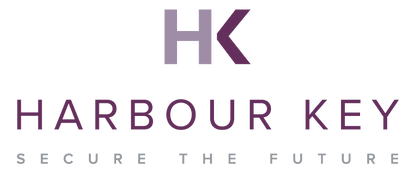
Employee ownership has been around for a number of years, but became a bigger item when the then government introduced Employee Ownership Trusts (“EOTs”) in 2014, to encourage more businesses to adopt the “John Lewis” ownership model. The John Lewis model giving each employee part-ownership of the company, along with a share of its profits, and a say in how the company is run.
Employee-owned companies are considered more competitive and sustainable, with high standards of employment and corporate responsibility. Initially the uptake was slow, however interest in employee ownership has increased over time, and in the last 18 months 250 new employee-owned businesses have been created. The Employee Ownership Association reports that employee ownership delivers 4% of UK GDP annually.
John Lewis is always referred to in any employee ownership discussions, however there are a number of well-known companies who have adopted the model.




Employee ownership sees employees collectively own the shares of a business, giving staff a greater stake in how the business is run, and a share of its profits.
Employee ownership can be applied in a number of scenarios:
- Business succession or ownership succession. The most common reason for employee ownership, the founder/owners wishing their workforce to take on the business.
- Growth and Expansion - owner managers decide to broaden ownership to all employees, reflecting the need to attract, retain and motivate talented people.
- Start Ups – the founder of a business opts for employee ownership at the outset of the business or in its early stages.
- Insolvency or closure threat – the employees provide an effective route to recovery for businesses that might otherwise fail.
- Public Service Spin-Outs - newly created businesses including social enterprises and community interest companies (“CIC”) delivering public services may choose an employee led or owned solution as part of their structure.
Employee ownership can be achieved in three ways:
- Indirect employee ownership - the employees do not own shares in their employer company directly, instead they are beneficiaries of the trust which owns the controlling shareholding.
- Direct employee ownership – the employees have direct ownership of shares typically via a statutory tax advantaged share plan over shares, for example a Company Share Option Plan (“CSOP”).
- Hybrid Model – combination to indirect ownership (EOT) and employee direct share ownership. Typically, the retiring owners sell their share interests to the EOT when it is first established and then over time some of this interest is transferred to employees.
Tax advantages?
The EOT is a tax efficient exit route following their introduction in 2014.
Tax-free bonus payments - Bonuses of up to £3,600 per employee per annum can be distributed as tax-free profit-share by the EOT-controlled company. National Insurance still applies.
Capital Gains Tax and Inheritance Tax Exemption
An individual disposing of their qualifying shares (or a collection of individuals together disposing of a controlling stake in the same tax year) to an EOT will not be charged to capital gains tax. To qualify for this exemption the EOT must hold a controlling interest (more than 50% ) following the transaction.
In addition to the capital gains tax exemption, the individual setting up the EOT also benefits from an inheritance tax exemption regarding their transfer of shares to the EOT.
As the tax breaks are so generous, there are a number of legislative conditions that have to be met, together with HMRC tax clearances.
Benefits of employee ownership?
Tax reliefs are not the only driving force behind the increasing use of EOTs. A combination of the following benefits can be achieved from employee ownership:
- Higher productivity and innovation;
- Better financial performance;
- Lower absenteeism;
- Higher employee commitment;
- Higher resistance to market volatility; and
- Lower staff turnover.
Despite the benefits of the employee ownership, it is not the right structure for every business. The workforce has to be willing, and one particular issue comes with scaling up, which can be challenging when multiple employees have a stake in the business - “group-thinking” can be detrimental to adaptability and agility.
Secondly, financing can be more challenging, as the number of options for raising capital are much more limited when the business can’t offer a stake in return for investment. There are banks which providing lending for employee ownership. The main finance route is sellers’ finance, the original owners basically getting paid out of the future profits of the business. The sellers therefore must have the confidence that the business under new management will be able to drive sustained improved financial performance to fund business operations and the debt repayments.
Although employee ownership may not fit everyone’s plans, we would recommend it forms part of an initial succession strategy review, so it can be considered, to help navigate between different potential exit routes available.
Should you wish discuss employee ownership in more detail, or other exit routes, please do not hesitate to call the office on 01452 713277



